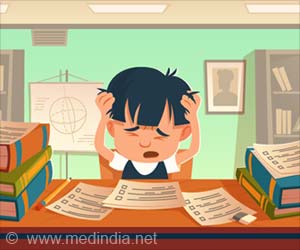A variety of tests or scales are administered by clinicians in order to diagnose autism spectrum disorders.

"Clinicians at one center may use a label like Asperger syndrome to describe a set of symptoms, while those at another center may use an entirely different label for the same symptoms. This is not a good way to make a diagnosis," says the study's lead investigator, Dr. Catherine Lord, director of the Institute for Brain Development, a partnership of Weill Cornell Medical College, NewYork-Presbyterian Hospital and Columbia University Medical Center. "Autism spectrum disorders are just that -- a spectrum of disorders. Instead of using subcategories, it would be better to simply report the results from agreed-upon tests and scales. This approach would provide more consistent and accurate information about individual patients."
The new study, published on Nov. 7 in the journal Archives of General Psychiatry, adds to previous evidence that standardized diagnostic instruments accurately predict who has autism and will continue to have it over time. It is also in line with recent skepticism about the value of categorical groupings of autism spectrum disorders in standard diagnostic manuals, such as the Diagnostic and Statistical Manual of Mental Disorders – IV – text revision (DSM-IV-TR) and the International Statistical Classification of Diseases. "There has been a lot of controversy about whether there should be separate diagnoses for autism spectrum disorder, especially Asperger syndrome," Dr. Lord says. "Most of the research has suggested that Asperger syndrome really isn't different from other autism spectrum disorders."
In the new study, Dr. Lord and co-author Dr. Eva Petkova, a biostatistician at NYU, studied about 2,100 people between the ages of 4 and 18 who were given a diagnosis of autism spectrum disorder by clinicians at 12 university-based centers. The participants were recruited from the Simons Simplex Collection, a multi-site project aimed at studying de novo genetic variations in families affected by autism spectrum disorders. The clinicians, who are experts in autism spectrum disorders, received training on how to administer and score the same set of cognitive tests and standardized instruments assessing social and communication skills and repetitive behavior, including the Autism Diagnostic Observation Schedule (ADOS) and the Autism Diagnostic Interview -- Revised (ADI-R). However, they received no specific training in making best-estimate clinical diagnoses. They used the DSM-IV-TR to classify individuals into three categories of varying severity: autistic disorder, pervasive developmental disorder -- not otherwise specified (PDD-NOS), and Asperger syndrome.
The researchers found that diagnoses of specific categories of autism spectrum disorder varied dramatically from site to site across the country. For instance, clinicians at one site gave only a diagnosis of autistic disorder, while clinicians at other sites gave that diagnosis to fewer than half of the participants. The proportion of individuals receiving a diagnosis of Asperger syndrome ranged from zero to nearly 21 percent across sites. These site differences were the second most important factor accounting for variation in the diagnoses (after social and communication deficits). However, the individuals with autism spectrum disorders did not vary significantly across sites in terms of their demographic information or developmental and behavioral characteristics, as measured by standardized instruments.
"The labels are pretty meaningless, because people are using the same general terms as if they mean the same thing, when they really don't," Dr. Lord says. "Because clinicians may not be using labels appropriately or diagnosing accurately, they may not be getting a sense of children's strengths and weaknesses and what therapy is best for them."
Advertisement
The variability in clinical diagnoses could reflect regional differences, Dr. Lord says. For instance, services in some regions may be available only to children with a diagnosis of autistic disorder, but this same diagnosis may be stigmatizing or limit school options in other regions. Clinicians may also vary in how they take into account an individual's level of irritability and hyperactivity when judging the severity of autism spectrum disorder, Dr. Lord adds.
Advertisement
"This is an extremely important paper regarding our understanding of the various components of autism spectrum disorder from a group that has been crucial in defining the features of autism over many years," says Dr. Gerald D. Fischbach, scientific director of the Simons Foundation Autism Research Initiative. "They call attention to quantifiable traits rather than existing diagnostic categories. We are proud to have funded this project and to have gathered the Simons Simplex Collection on which this study is based under Dr. Lord's leadership."
In future research, Dr. Lord will work on improving diagnostic instruments --making them shorter, easier to use, and more appropriate for a wider variety of patients -- and assessing whether certain dimensions are really distinct from one another. This work will build on her previous pioneering efforts in developing these commonly used scales.
Source-Eurekalert










